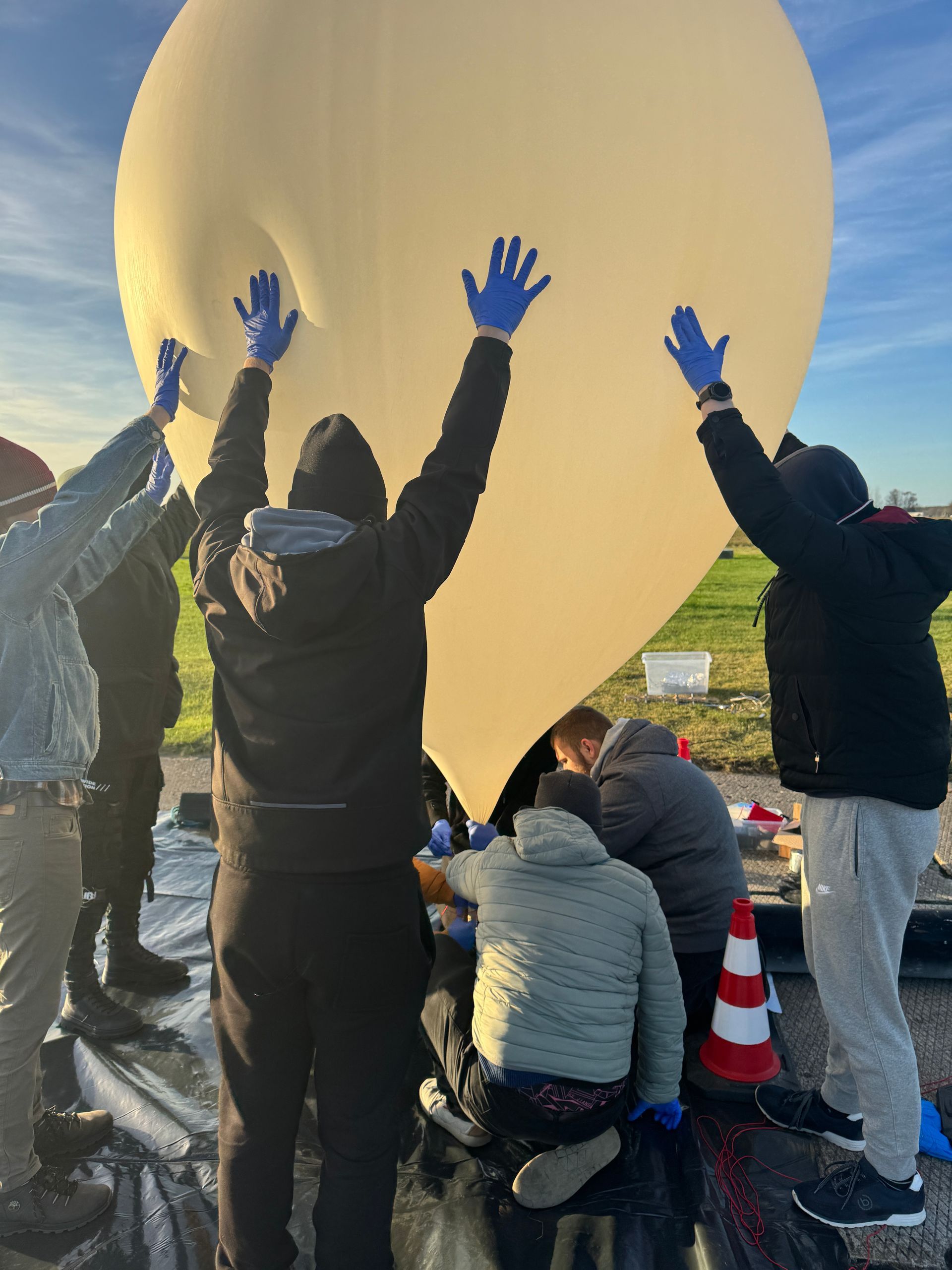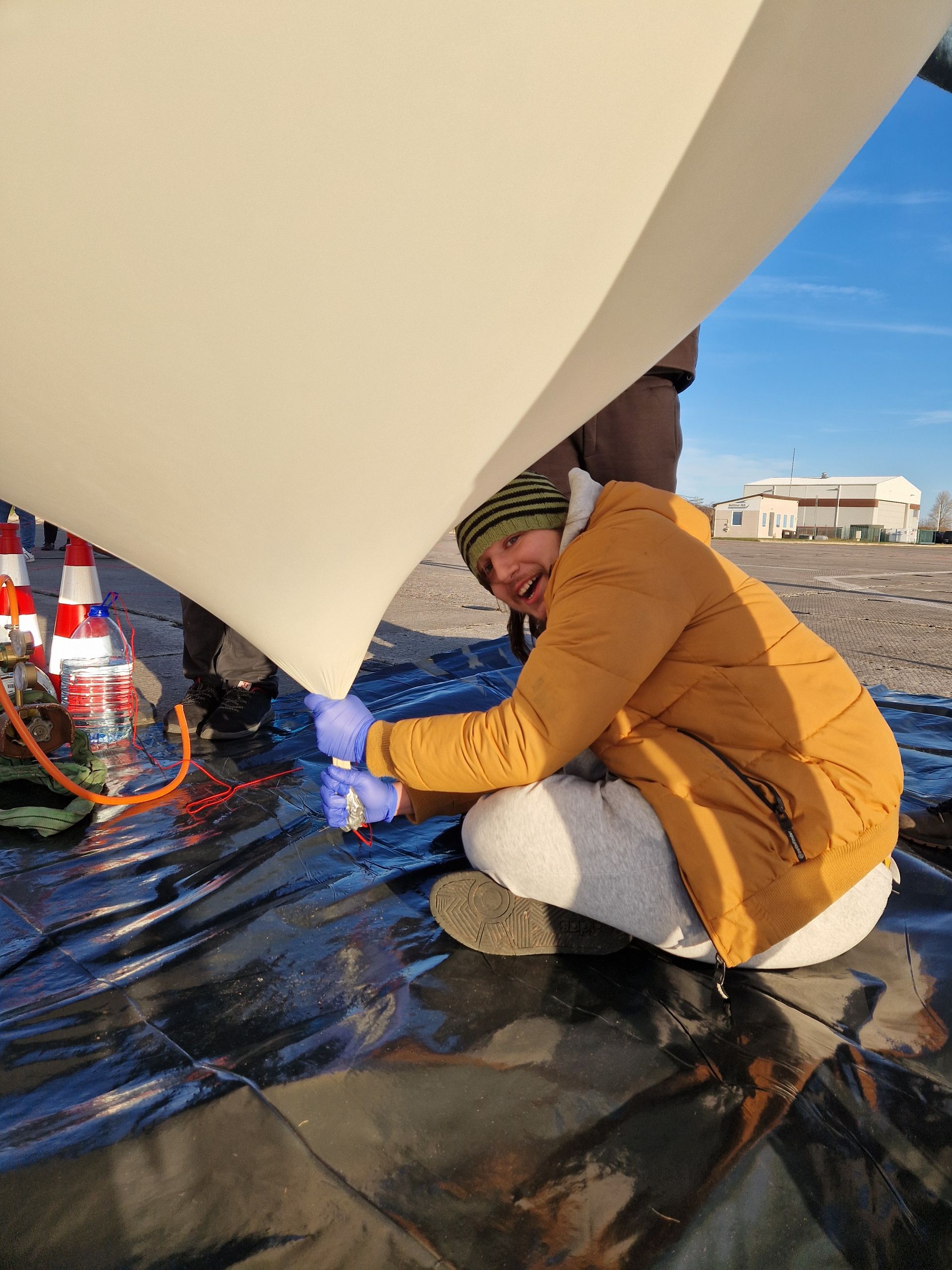Students Successfully Launch IRBE-6 Stratospheric Probe
Students of Electronic Engineering at Ventspils University of Applied Sciences (VUAS) have successfully developed and launched the IRBE-6 stratospheric probe from Ventspils Airport. The probe is capable of reaching an altitude of 30 kilometers. This year, the students' main task was to develop a communication system that would enable the probe to receive and execute commands from a ground-based station, as well as to function as a meteorological probe, collecting atmospheric data at various altitudes.
The probe soars above clouds and commercial flight paths, navigating through wind speeds exceeding 100 km/h and temperatures dropping below -40°C. The development of the probe had two main objectives: technical and scientific. Projects of this nature are an effective way for students to bridge theory with practice, encouraging them to solve real-world engineering challenges. This hands-on approach is widely used at leading technology universities, where traditional lectures are often supplemented with practical, project-based learning.
This year’s primary technical challenge was to design and build a communication system capable of receiving and executing commands from a ground-based station while maintaining a continuous beacon signal. The beacon, which is essential for tracking the probe, broadcasts a signal to radio amateurs every three seconds.
Once the balloon carrying the probe reaches the stratosphere, it bursts, allowing the payload — a project developed entirely by the students — to descend back to Earth. To ensure the payload is not damaged on landing, it is equipped with a special safety parachute. During its flight, the probe collects a variety of measurements and is equipped with pressure, temperature, and inertial measurement sensors, as well as a power supply system and an embedded computing system.
The stratospheric probe was successfully launched on November 15 at 10:00 from Ventspils Airport. Based on their calculations, the students expect the probe to land in the Ezere Municipality near the Lithuanian border.
This year’s IRBE-6 development team consisted of six students: Rodrigo Laurinovičs, Mārtiņš Leimants, Artūrs Marcus Tīģeris, Sandis Kaģis, Marta Anete Vinniņa, Aksels Ķirsons
As part of this project, students not only strengthen their electronic engineering skills, but also learn to work in teams, plan and implement large-scale projects, and address legal and regulatory issues. Given that the balloon rises into controlled airspace, students must coordinate their activities with aviation authorities to ensure compliance with safety regulations.
Share on other platforms
Other news















